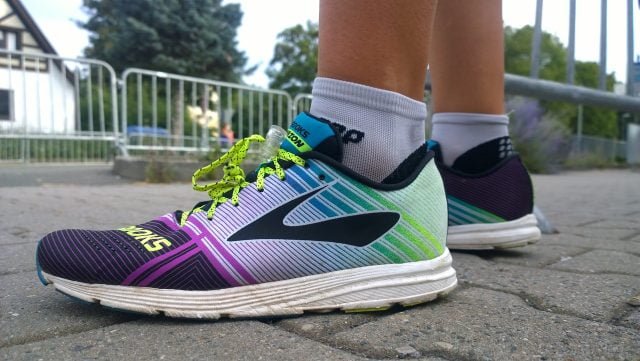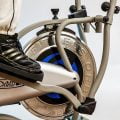When training for a big race or running to stay in shape or lose weight, it can be easy to run the same old three to five miles four or five times per week. While running for distance can be incredibly beneficial, you may find after running the same route a few times, you get bored of your surroundings and your workout.
This article will discuss the benefits of speed training, some speed training drills, and a few considerations that are important to keep in mind while you are incorporating speed training into your exercise regimen.
Benefits of Speed Training
- Speed Training Increases Metabolism and Lean Muscle
- Increased Speed and Endurance
- Lactic Acid Threshold Increases
- Speed Training Helps You Get Mentally Prepared For Race Day
Speed training is a great way to improve your core strength, your lean muscle mass, and your metabolism, as speed training uses stored energy, such as fat, more efficiently than other workouts. Make sure to eat plenty of lean proteins and fresh fruits and vegetables to avoid any unintentional weight gain, and make sure to drink plenty of water, as dehydration can easily cause overeating.

As the name suggests, speed training helps to increase speed levels. Each time you complete speed training drills, you will increase your lean muscle mass and help you to move more quickly and efficiently.
Runners assume that being lighter is always better, but this is not always true. Lean muscle mass can and will translate to increased speed and endurance because muscle can be trained, unlike tendons, joints and bones. By increasing your muscle mass and training it to fire at the appropriate times, you can increase performance over time.
As you exercise, lactate levels in your body increase. While during most exercises your body is able to flush out lactic acid fairly quickly, when sprinting or participating in other very high intensity workouts, your body sometimes is unable to flush this acid out in time. Buildup of lactic acid can cause you to be sore and fatigued during your workout, and can leave you particularly sore post workout. Regularly participating in speed training increases the levels of lactic acid your body is able to flush out during and after a hard workout.
As anyone who has prepared for a long race knows, the mental preparation is almost as important as the physical preparation. When you hit a wall at mile 8 of 13 during your half marathon, generally it is a mental wall that holds you back rather than a physical wall. Speed training is difficult, but completing these drills one to two times a week can prepare you mentally for other difficult physical activities.
Speed Training Drills
In this section, paces will be described based on personal ability, and not a certain time, as you may find yourself running at a very different pace as the next person. These pace definitions are as follows:
- Jog/Recovery: Less than 60% working heart rate (WHR). This is the speed you should utilize in between intervals to help your body recover in between the next difficult run
- Steady/Conversation: A pace in which you can easily hold a conversation without too much effort. Aim for between 60 and 75% WHR.
- Brisk: A pace that is comfortably hard, and on a scale of one to ten, you should be going at about an eight. Aim for 85% WHR, and talking should be difficult but not impossible at this point.
- Fast: A difficult pace that you are unable to maintain for an extended period of time. You are unable to converse easily at this point, and your WHR should be at about 85 to 95%.
In order to determine your working heart rate, you will need to know your resting heart rate, either taken manually or with a heart rate monitor on your watch or blood pressure machine. This calculator will help you determine what your working heart rate should be at any given pace.
Before and after any of these intervals, it is important to warm up with a brisk run or easy jog for ten to fifteen minutes to warm up your muscles and help prevent injury. It is also important to stretch prior to any speed training, with either static or dynamic stretches, as well as after.
Speed Training Drill Tip #1: Straights and Curves
This drill works best if you have access to a 200 or 400 meter track. On the straight part of the track run at a steady or brisk pace, depending on your skill level, and on the curved part of the track, jog/recover. The more skilled you are, the longer and faster you can go. Depending on your skill level and length of the track, repeat this run/jog interval 10 to 20 times, resulting in 1000 to 2000 meters.
This type of speed training is important as it gets your body used to changing speeds and harder work. This type of workout is also particularly beneficial for those who are just starting to run, as it will help to get your miles in while increasing your speed and endurance.
Speed Training Drill Tip #2: Gear Shifter
The gear shifter is another speed workout that will help new runners get used to running at quicker paces and help runners at skill level from getting bored with their workout.
Just like a manual car, this speed training drill will move up and down different speeds. After a quick warm up, find your steady/conversation pace, and maintain this for two to three minutes. Then, bump up to a brisk pace and hold that for one to two minutes. After this, find your fast pace, and maintain this for 30 seconds. Go back to your brisk pace for one to two minutes, and then to your conversation pace for two to three minutes. After a five minute jog/recovery, complete these intervals again.

Speed Training Drill Tip #3: On the Hills
For many runners, experienced and novice alike, hill workouts are equal parts enjoyable and dreadful, but there are definite benefits associated with speed training on hills. Find a hill that is not too steep and would take about 30 seconds to sprint to the top. Sprint at almost full capacity to the top, and jog/recover back to the bottom. Repeat this five to ten times, or you are getting to the point of getting too fatigued to continue, but not so tired that you cannot complete your cool down.
Considerations for Speed Training Drills
- The Right Shoes Make All The Difference
- Be Aware Of Your Surroundings
- Don’t Jump Into Anything Too Quickly
- Don’t Overexert Your Body
Many athletes, runners and otherwise, assume that one shoe fits all activities. However, it is incredibly important to invest in a quality pair of running shoes that you use exclusively for running. Visit your local running shoes store and talk with an expert who can analyze your gait and recommend shoes based on your stride and foot shape. These do not need to be expensive, but they do need to be quality, particularly if you are running three to five per week and/or are training for significant race distances.

Additionally, it is important to have quality socks, as they wick away moisture, keeping your feet from rubbing and getting sore. It is also important to invest in quality clothing that will help you to remove sweat from your body and keep you warm enough or cool enough, depending on the season.
This should probably go without saying, but hundreds of runners are injured every year by obstacles in their paths and not paying attention to their treadmill. While phones and MP3 players are great to keep you entertained during your run, it is important to keep your eyes on what is in front of you to help prevent injuries to yourself and others.
When getting ready for a new race or practicing speed training drills for the first time, it can be tempting to go out for a long or hard run right away to jumpstart your training. However, it is important to build up to increase your endurance and
If you did jump into your workouts too quickly, know that it is okay to take an unplanned day off when you had planned on working out. While soreness isn’t inherently bad, when you are too sore to move around comfortably or are experiencing an unordinary amount of pain and stiffness, take a day or two off to alternate between icing and heating your sore muscles and getting so much needed rest. If you are worried about how sore you are, visit a doctor, physical therapist, or chiropractor to diagnose any pulled muscles or other injuries, and for treatment suggestions.
Conclusion
Running can be an incredibly beneficial for the mind and body, but as any runner knows, running the same trail day after day can quickly make you bored with your favorite activity. Speed training drills can increase endurance and speed, keep you entertained, and can help you be adequately prepared for your upcoming race. Eat healthy foods, drink plenty of water, and enjoy your run.
References:
https://www.ncbi.nlm.nih.gov/pubmed/23679147
https://www.ncbi.nlm.nih.gov/pubmed/28391489
https://www.ncbi.nlm.nih.gov/pubmed/23982902
https://www.ncbi.nlm.nih.gov/pmc/articles/PMC5310862/






